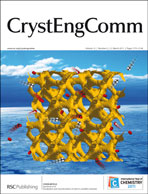Bone is a hierarchically structured composite which imparts it with unique mechanical properties and bioresorptive potential. These properties are primarily influenced by the underlying nanostructure of bone, which consists of nanocrystals of hydroxyapatite embedded and uniaxially aligned within collagen fibrils. There is also a small fraction of non-collagenous proteins in bone, and these are thought to play an important role in bone's formation. In our in vitro model system of bone formation, polyanionic peptides are used to mimic the role of the non-collagenous proteins. In our prior studies, we have shown that intrafibrillar mineralization can be achieved in synthetic reconstituted collagen sponges using a polymer-induced liquid-precursor (PILP) mineralization process. This led to a nanostructured arrangement of hydroxyapatite crystals within the individual fibrils which closely mimics that of bone. This report demonstrates that biogenic collagen scaffolds obtained from turkey tendon, which consist of densely packed and oriented collagen fibrils, can also be mineralized by the PILP process. Synchrotron X-ray diffraction studies show that the mineralization process leads to a high degree of crystallographic orientation at the macroscale, thus emulating that found in the biological system of naturally mineralizing turkey tendon.

You have access to this article
 Please wait while we load your content...
Something went wrong. Try again?
Please wait while we load your content...
Something went wrong. Try again?


 Please wait while we load your content...
Please wait while we load your content...